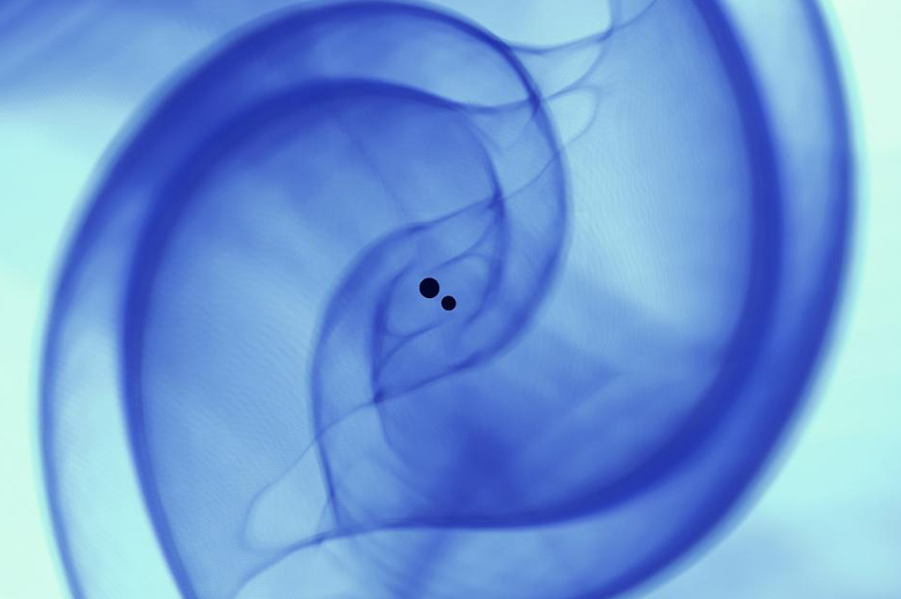Scientists Use Artificial Intelligence to Detect Gravitational Waves

By Jared Sagoff for Argonne
When gravitational waves were first detected in 2015 by the advanced Laser Interferometer Gravitational-Wave Observatory (LIGO), they sent a ripple through the scientific community, as they confirmed another of Einstein’s theories and marked the birth of gravitational wave astronomy.
As LIGO and its international partners continue to upgrade their detectors’ sensitivity to gravitational waves, they will be able to probe a larger volume of the universe—making the detection of gravitational wave sources a daily occurrence rather than weekly or monthly. Scientists hope this will launch a new era of precision astronomy, because combining information from multiple kinds of signals from space is a much more powerful way to study the universe. But realizing this goal will require a radical re-thinking of existing methods used to search for and find gravitational waves.
Recently, Argonne National Laboratory computational scientist Eliu Huerta, along with collaborators from the University of Chicago, the University of Illinois at Urbana-Champaign, NVIDIA and IBM, developed a new artificial intelligence framework that allows for accelerated, scalable and reproducible detection of gravitational waves.
This new framework indicates that AI models could be as sensitive as traditional template matching algorithms, but orders of magnitude faster. Furthermore, these AI algorithms would only require an inexpensive GPU—like those found in video gaming systems—to process data faster than real time.
The AI ensemble used for this study processed an entire month (August 2017) of advanced LIGO data in less than seven minutes. The AI ensemble used by the team for this analysis identified all four binary black hole mergers previously identified in that dataset, and reported no misclassifications.
“As a computer scientist, what’s exciting to me about this project is that it shows how, with the right tools, AI methods can be integrated naturally into the workflows of scientists,” said Ian Foster, the UChicago Arthur Holly Compton Distinguished Service Professor of Computer Science and director of Argonne’s Data Science and Learning division, “allowing them to do their work faster and better—augmenting, not replacing, human intelligence.”
Bringing disparate resources to bear, this interdisciplinary and multi-institutional team of collaborators has published a paper in Nature Astronomy showcasing a data-driven approach that combines the team’s collective supercomputing resources.
“In this study, we’ve used the combined power of AI and supercomputing to help solve timely and relevant big-data experiments. We are now making AI studies fully reproducible, not merely ascertaining whether AI may provide a novel solution to grand challenges,” said Huerta, who leads Argonne’s research on translational artificial intelligence. Building upon the interdisciplinary nature of this project, the team looks forward to new applications of this data-driven framework beyond big-data challenges in physics.
“This work highlights the significant value of data infrastructure to the scientific community,” said Ben Blaiszik, a research scientist at Argonne and the University of Chicago. “The long-term investments that have been made by the Department of Energy, the National Science Foundation, the National Institutes of Standards and Technology and others have created a set of building blocks. It is possible for us to bring these building blocks together in new and exciting ways to scale this analysis and to help deliver these capabilities to others in the future.”
The new framework builds off of a framework originally proposed by Huerta and his colleagues in 2017. The team further advanced their use of AI for astrophysics research by leveraging Argonne supercomputing resources through a two-year award from the Argonne Leadership Computing Facility’s Data Science Program. This led to the team’s current Innovative and Novel Computational Impact on Theory and Experiment (INCITE) project on the Summit supercomputer at the Oak Ridge Leadership Computing Facility.












